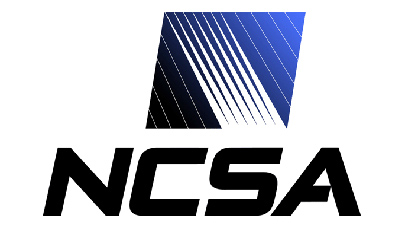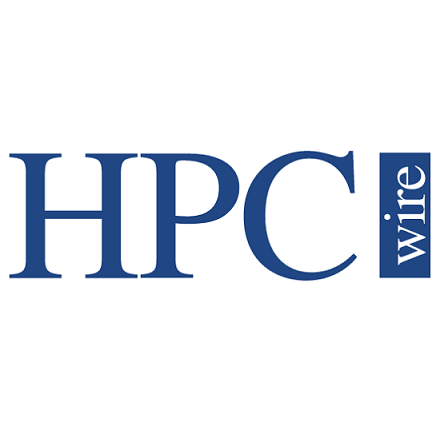
Larry Smarr: The Future of Distributed Computing Is Here
August 25, 2020
Larry Smarr may have stepped back from full-time work in the Computer Science and Engineering Department at the University of California, San Diego, but that do Read more…

Larry Smarr Helps NCSA Celebrate 30th Anniversary
September 20, 2016
Throughout the past year, the National Center for Supercomputing Applications has been celebrating its 30th anniversary. On Friday, Larry Smarr, whose unsolicited 1983 proposal to the National Science Foundation (NSF) begat NCSA in 1985 and helped spur NSF to create not one but five national centers for supercomputing, gave a celebratory talk at NCSA. Read more…

Gravitational Waves Detected! Historic LIGO Success Strikes Chord with Larry Smarr
February 12, 2016
By now you’ve likely heard that scientists reported detecting the long-sought gravitational waves; this is roughly a 100 years since their prediction by Einst Read more…

From Quantified Self to Personalized Medicine
November 6, 2014
The University of Washington Computer Science and Engineering Distinguished Lecture series recently welcomed Calit2 luminary Larry Smarr to speak on a very inte Read more…

One Cloud to Rule Them All
December 6, 2011
Calit2's Larry Smarr examines the implications of an increasingly-networked world. Read more…

SDSC Puts Data at Center Stage
September 7, 2010
The naming of Michael Norman as director of the San Diego Supercomputer Center (SDSC) last week was long overdue. SDSC has been without an official director for more than 14 months, with Norman filling the spot as the interim head since last July. The appointment could mark something of a comeback for the center, which has not only gone director-less during this time, but has been operating without a high-end supercomputer as well. Read more…

The Good, the Bad and the Ugly: Reflections on the NSF Supercomputer Center Program
January 4, 2010
In a position paper for community input at NSF's Future of High Performance Computing Workshop in early December, Calit2 Director Larry Smarr reviewed the successes, failures and continuing challenges of the NSF supercomputing program that he helped create. Read more…

- Click Here for More Headlines

Whitepaper
Transforming Industrial and Automotive Manufacturing
In this era, expansion in digital infrastructure capacity is inevitable. Parallel to this, climate change consciousness is also rising, making sustainability a mandatory part of the organization’s functioning. As computing workloads such as AI and HPC continue to surge, so does the energy consumption, posing environmental woes. IT departments within organizations have a crucial role in combating this challenge. They can significantly drive sustainable practices by influencing newer technologies and process adoption that aid in mitigating the effects of climate change.
While buying more sustainable IT solutions is an option, partnering with IT solutions providers, such and Lenovo and Intel, who are committed to sustainability and aiding customers in executing sustainability strategies is likely to be more impactful.
Learn how Lenovo and Intel, through their partnership, are strongly positioned to address this need with their innovations driving energy efficiency and environmental stewardship.
Download Now
Sponsored by Lenovo
Whitepaper
How Direct Liquid Cooling Improves Data Center Energy Efficiency
Data centers are experiencing increasing power consumption, space constraints and cooling demands due to the unprecedented computing power required by today’s chips and servers. HVAC cooling systems consume approximately 40% of a data center’s electricity. These systems traditionally use air conditioning, air handling and fans to cool the data center facility and IT equipment, ultimately resulting in high energy consumption and high carbon emissions. Data centers are moving to direct liquid cooled (DLC) systems to improve cooling efficiency thus lowering their PUE, operating expenses (OPEX) and carbon footprint.
This paper describes how CoolIT Systems (CoolIT) meets the need for improved energy efficiency in data centers and includes case studies that show how CoolIT’s DLC solutions improve energy efficiency, increase rack density, lower OPEX, and enable sustainability programs. CoolIT is the global market and innovation leader in scalable DLC solutions for the world’s most demanding computing environments. CoolIT’s end-to-end solutions meet the rising demand in cooling and the rising demand for energy efficiency.
Download Now
Sponsored by CoolIT
Advanced Scale Career Development & Workforce Enhancement Center
Featured Advanced Scale Jobs:
HPCwire Resource Library
HPCwire Product Showcase
© 2024 HPCwire. All Rights Reserved. A Tabor Communications Publication
HPCwire is a registered trademark of Tabor Communications, Inc. Use of this site is governed by our Terms of Use and Privacy Policy.
Reproduction in whole or in part in any form or medium without express written permission of Tabor Communications, Inc. is prohibited.
























